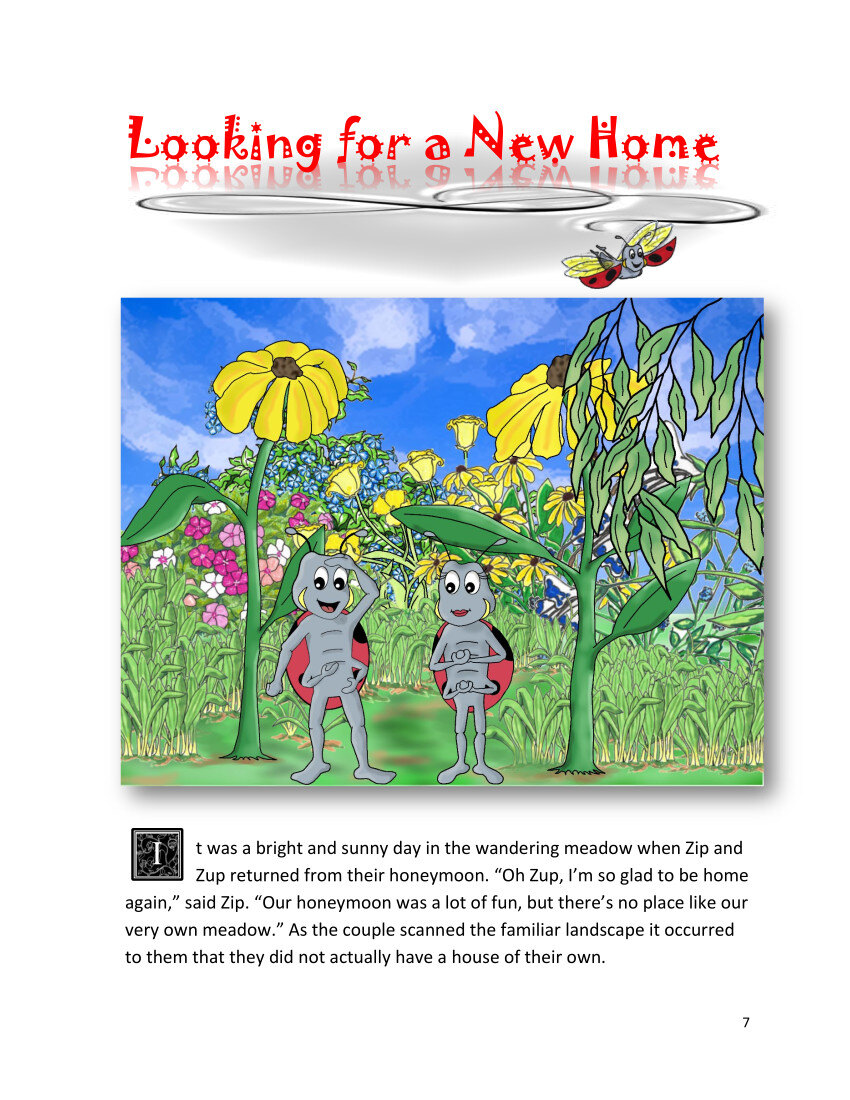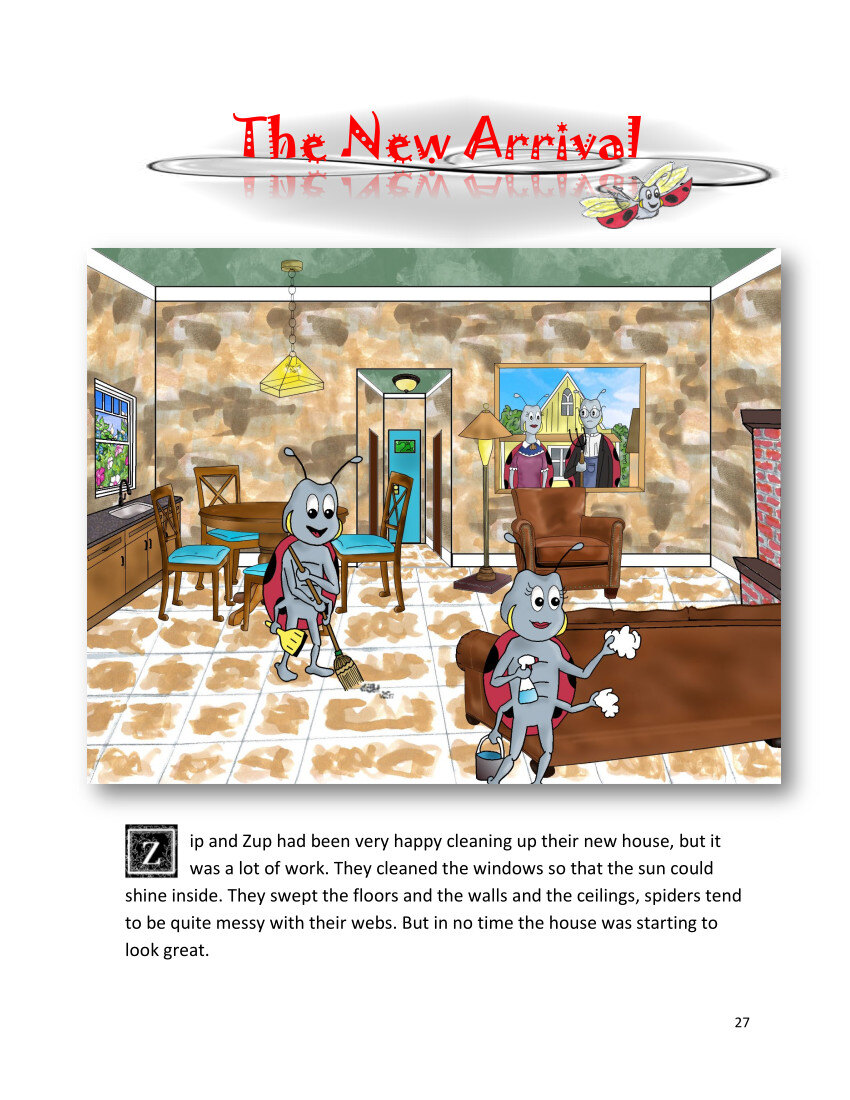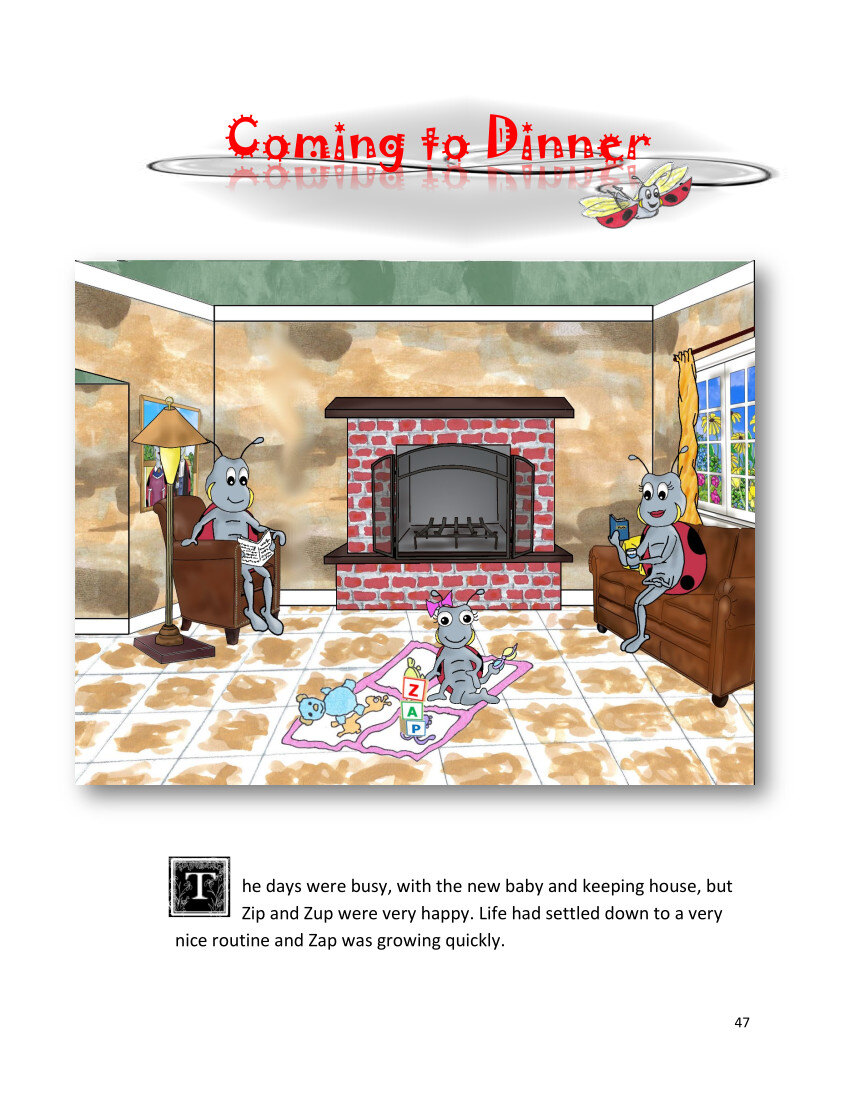
Looking for a New Home
Zip and Zup are back from their honeymoon, but they soon realize that they don't have a home of their own. They begin to look all over, and finally they find a nice house. There's only one problem, a spider already lives there. What happens next?
The New Arrival
Our little family of ladybugs is growing. Zip has laid a nice, yellow egg and they are so excited waiting for it to hatch. The other moms in the Wandering Meadow soon have their new babies all around them, but the little egg has not hatched. Is there something wrong? Zip is very worried.
Take a look Inside of the book
We've selected a few sample pages for you to review. Click the arrows to scroll through them.












Bonus Pages in every book
At the back of every Zip, Zap, and Zup book is a Ladybug Fact Page and our Adventures in Learning Pages.
The Ladybug Fact Page serves two primary purposes. First, it reminds the children that while our characters are ladybugs, they are different from real ladybugs. Secondly, by giving them a little bit of information about real ladybugs we hope to inspire curiosity.
The Adventures in Learning pages are geared towards helping your child look deeper into the story and seeing things that aren’t necessarily obvious at first. There are five bonus pages in each book, each one dealing with a different subject area: Social Studies, Language Arts, Math, Science, and Art.
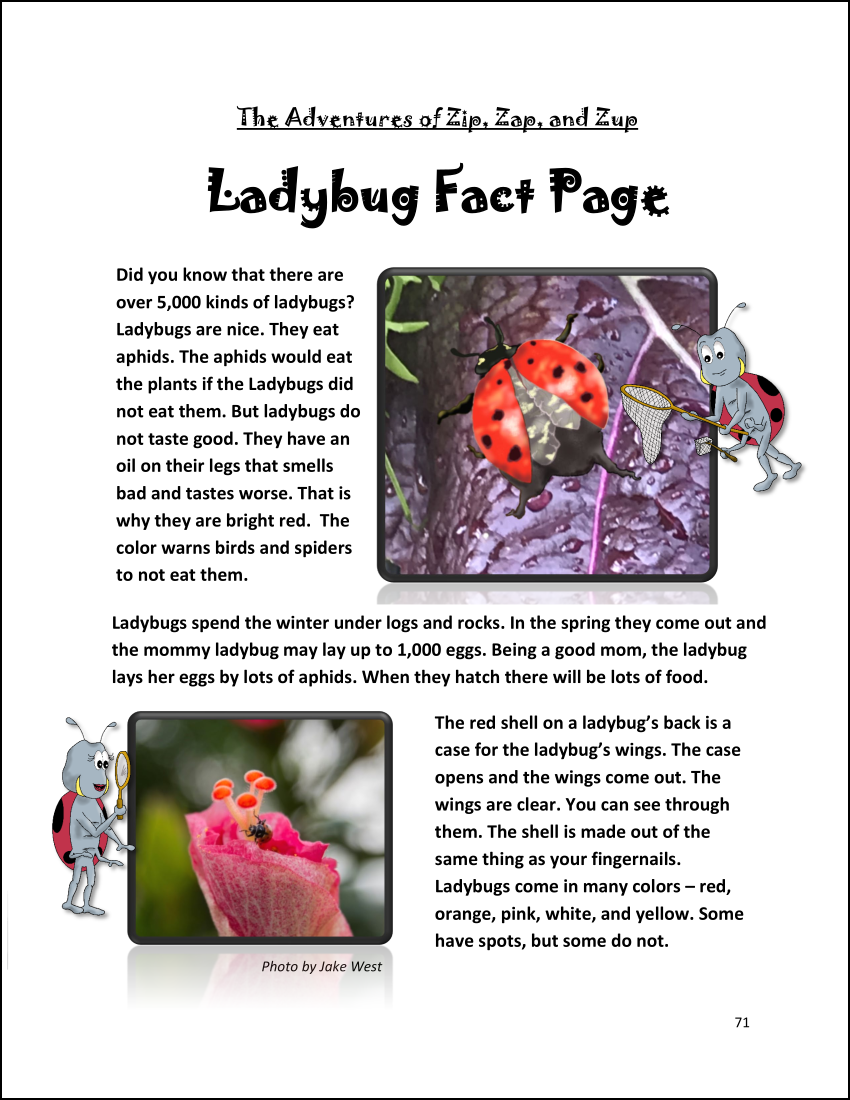
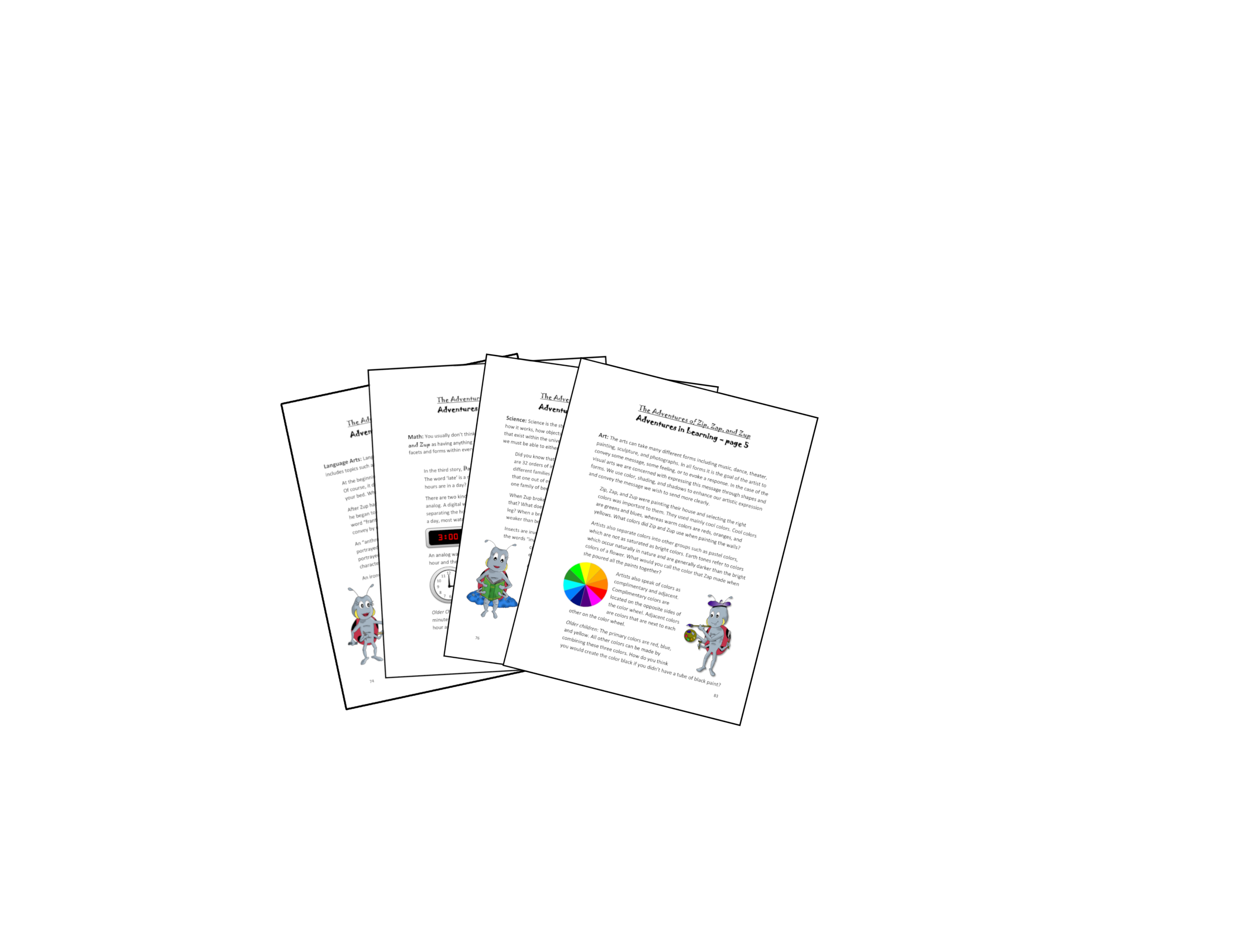
Companion Activity Books Available
We have an Activity book for each Adventure book
Filled with coloring pages, connect the dots, color by number, spot the differences, mazes, scavenger hunts, word searches, crossword puzzles, dot game boards, and various versions of tic-tac-toe, there are activities for every age and interest.Activity books do more than just give you a break and keep your child quiet. They help build important skills and capabilities, such as:
- Fine Motor Skills
- Creative Problem Solving
- Learning how to compete fairly
Click Here to get more information about our Activity Books
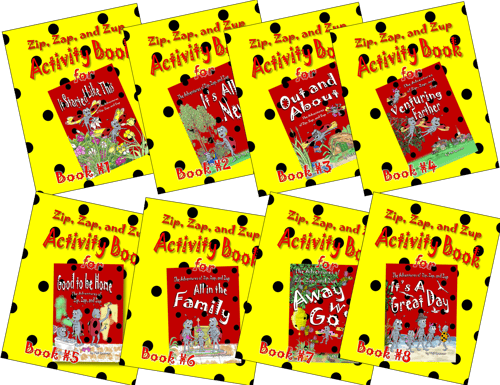
What Makes Zip, Zap, and Zup books special?
Children are only little once, and before you know it they’ll be grown and out of the phase where you can pour into them and they will readily listen to and accept your guidance. You need to start while they are young and be purposeful in what you are training into them. We’ve designed the Adventures of Zip, Zap, and Zup to come along side you as you teach and interact with your young children.
Training Children to Listen and Focus
So, what do we mean when we talk about training children to listen and focus? Well, I’m sure you’ve seen the stories in the news about the impact of technology on our children, and how too much exposure to screens and electronic entertainment can cause children, and even some adults, to struggle with staying focused on anything for more than a few seconds.
On the other hand, researchers have found that reading improves your ability to focus because it stimulates the prefrontal cortex.
Good Literature is Important - even for little ones
While reading is good, it is also important to read good literature. I recognize that we are talking about young children here, so the complexity of the plot and the descriptions have to be appropriate, but I believe they can still be rich and meaningful. The Adventures of Zip, Zap, and Zup are not “readers”, per se. They are specifically intended for parents to sit down with their younger children and read them together .
The language we use in the stories is not “dumbed down”. From metaphors, like “the rain came down in sheets”, and “the wind whistling through the leaves”, to phrases with an onomatopoeia like “a buzz among the guests”, and “the gentle pitter-patter of the rain”, the Adventures of Zip, Zap, and Zup incorporate common literary devices to keep them interesting and relatable. We have also been purposeful in using descriptive vocabulary words like “howling”, “frantic”, “antiseptic”, “grime”, and “cozy”, in addition to words that are specific for insects, such as “cocoon”, “pupa”, and “antennae”. Reading to your children is an activity that can specifically train them to develop attention and focus, while engaging them in a fun activity that builds closeness with mom and dad.
Training children to see the world from others’ eyes
It’s also crucial that children learn how to relate to other people and how to understand how other people feel.
How do we learn about caring, empathy, the world around us, and how to interact with it appropriately? One of the primary tools is through stories. Unlike direct instructions, such as do this or don’t do that, stories give context. They illustrate not only what to do, but why to do it and how to do it, or why and how not to do it. Narratives help us observe situations. They engage us not only intellectually, but also emotionally. They help us to look at motives, at circumstances, and evaluating what we should do.
Ladybugs are small, just like children
For the Adventures of Zip, Zap, and Zup, our characters are small, little ladybugs who have to navigate a world where most things are bigger than they are. Just as children sometimes feel very small in a big world, we want them to know that being small does not mean that they are not important or that they can’t do important things.
Animals are often used in children’s stories, where they are given some human qualities, like being able to talk and think and reason, and modified to look more like people, such as walking on two legs and possessing a posable thumb. The term for giving animals human traits is anthropomorphism, which makes them more relatable. In so doing, the children can see themselves in the animals and learn the lessons, and yet remain distant.
Training children to be curious and to look deeper
The final skill that we want to help you develop in your children is learning to be curious and to look at more than what is on the surface. Each Zip, Zap, and Zup book contains three separate stories, a ladybug fact page, and bonus pages that look at various subjects in relation to the stories.
Each story has a particular setting and within that setting is a conflict or a crisis. The conflict or crisis is never meant to be scary, but is designed to arouse curiosity, intrigue, and possible concern while it remains unresolved. The characters then work through the situation to arrive at a resolution which concludes the story. Learning to respond appropriately to situations is an important skill and often times that initial response is one of trying to fully understand what is happening. Wanting to fully understand something is at the root of curiosity.
The Adventures in Learning pages help you to get new things out of the stories every time you read them.
The idea is not that you would sit down and read them all as a story themselves, but instead, if your child asks to read a story again, maybe you would read one of the bonus pages first, and then, as you re-read the story, you would look for what had been introduced on the bonus page. Extending the story to other ideas and real-life experiences you may have had, especially when you were a child, is a great way for you to build wonderful childhood memories with your children.

